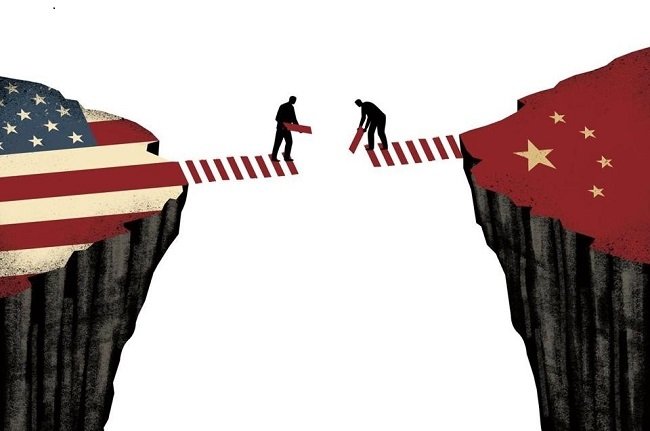Overseas media said that the latest annual report released by the Australian Lowy Institute recently indicated that the gap between China and the United States in the Asia-Pacific region has been substantially narrowed.
U.S. reputation severely damaged
According to a report on the British “Guardian” website on October 18, the Lowe Institute’s Asian Power Index shows that the United States is still the number one country in the Indo-Pacific region, but its position in the region has declined the most in the past year. The reason is that improper handling of the new crown epidemic has caused reputational damage.
According to the report, the foreign policy think tank based in Australia released the latest annual report on the index that day. According to the report, although China, a rising power, still ranks second, it is believed that it will catch up with the United States by the end of this decade.
Herve Le Mayeur, head of the Asian Strength Index project, said: “This year, we have seen an acceleration in the transfer of power, but the driving factor is actually more poor performance than other reasons. This is a direct consequence of the epidemic .”
According to the report, this annual index ranks 26 countries and regions based on their overall strength and aims to provide an overview of changes in influence in the rapidly changing Indo-Pacific region.
According to the latest report, the once-in-a-century new crown epidemic means that governments and societies “are now facing a’perfect storm’ of public health challenges, economic challenges, and strategic challenges, a situation that was hardly imagined a year ago.” .
The report pointed out that although the transfer of power “occurs slowly outside of
wartime,” the epidemic has triggered a “race to the bottom.”
18 countries and regions in the Indo-Pacific region experienced a major decline in relative strength in 2020. In the eight categories covered by the index, except for one, the US scores fell.
The report noted that the top-ranked country is still the United States
followed by China, but the overall advantage of the United States over China has been reduced by half in the past two years.
Next on the ranking table are Japan, India and Russia, but the scores of these three countries have also declined.
The report warns that of all the countries and regions in the Indo-Pacific region, India’s economy has
lost the greatest growth potential due to the damage caused by the epidemic.
This means that “India’s position as a close competitor to China in the future has become less certain. “.
The report also pointed out that as the Chinese economy is expected to recover at a faster rate than other major economies
China will consolidate its position as the economic center of the region, while the relative importance of the US economy in Asia will decline.
Reports believe that China is expected to narrow the overall power gap with the United States within 10 years.
China’s status has steadily improved
According to a report on the Hong Kong South China Morning Post website on October 18, according to a
new Asian power index, the United States’ response to the new crown epidemic
has accelerated its decline in its strength relative to China.
The gap between the two superpowers has been since 2018. It has been reduced by half since the year.
According to the report, the annual index released by the Lowe Institute, an Australian think tank, shows that although the
United States continues to dominate the region, its relative strength decline in 2020 is the largest among all countries and regions.
This year is the third year that the index has been released. The 2020 index uses 8 categories and 128 indicators to rank 26 countries and regions. These 8 categories include economic capabilities, economic relations, military capabilities, defense networks, diplomatic influence, and culture. Influence, resilience and future resources.
The report pointed out that the strength of the United States in terms of economic relations
economic capacity and diplomatic influence has declined the most
and the epidemic has hit the country’s reputation more than any other country or region.
Herve Lemayer, head of the Lowe Institute’s Asian Power Index project, said: “The results are a powerful reminder that legitimacy and leadership on the world stage begins with leaders’ ability to govern at home.
It also proves the future. The consequences of being able to play a good role in global leadership.”
He said: “In the next 10 years, the uneven economic recovery will change the distribution of power among the world’s major players. Despite the impact of the epidemic, China’s economy has rebounded faster than any other major economy.
It is predicted that China’s economy will grow in 2020, while the United States and Japan will
not return to the level of economic activity in 2019 until 2024 and 2027, respectively.”
According to the report, China scored 76.1 in this year’s index, ranking second as last year. This rising power has made progress in cultural influence, military capabilities, and economic relations.
The Lowe Institute said that China’s rapid recovery from the epidemic
will allow it to improve its position in the region in the next few years.



